-
BackX
-
Components
-
-
Category
-
Semiconductors
- Diodes
- Thyristors
-
Electro-insulated Modules
- Electro-insulated Modules | VISHAY (IR)
- Electro-insulated Modules | INFINEON (EUPEC)
- Electro-insulated Modules | Semikron
- Electro-insulated Modules | POWEREX
- Electro-insulated Modules | IXYS
- Electro-insulated Modules | POSEICO
- Electro-insulated Modules | ABB
- Electro-insulated Modules | TECHSEM
- Go to the subcategory
- Bridge Rectifiers
-
Transistors
- Transistors | GeneSiC
- SiC MOSFET Modules | Mitsubishi
- SiC MOSFET Modules | STARPOWER
- Module SiC MOSFET ABB’s
- IGBT Modules | MITSUBISHI
- Transistor Modules | MITSUBISHI
- MOSFET Modules | MITSUBISHI
- Transistor Modules | ABB
- IGBT Modules | POWEREX
- IGBT Modules | INFINEON (EUPEC)
- Silicon Carbide (SiC) semiconductor elements
- Go to the subcategory
- Gate Drivers
- Power Blocks
- Go to the subcategory
- Electrical Transducers
-
Passive components (capacitors, resistors, fuses, filters)
- Resistors
-
Fuses
- Miniature Fuses for electronic circuits - ABC & AGC Series
- Tubular Fast-acting Fuses
- Time-delay Fuse Links with GL/GG & AM characteristics
- Ultrafast Fuse Links
- Fast-acting Fuses (British & American standard)
- Fast-acting Fuses (European standard)
- Traction Fuses
- High-voltage Fuse Links
- Go to the subcategory
- Capacitors
- EMI Filters
- Supercapacitors
- Power surge protection
- TEMPEST emission revealing filters
- Surge arrester
- Go to the subcategory
-
Relays and Contactors
- Relays and Contactors - Theory
- 3-Phase AC Semiconductor Relays
- DC Semiconductor Relays
- Controllers, Control Systems and Accessories
- Soft Starters and Reversible Relays
- Electromechanical Relays
- Contactors
- Rotary Switches
-
Single-Phase AC Semiconductor Relays
- AC ONE PHASE RELAYS 1 series| D2425 | D2450
- One phase semiconductor AC relays CWA and CWD series
- One phase semiconductor AC relays CMRA and CMRD series
- One phase semiconductor AC relays - PS series
- Double and quadruple semiconductor AC relays - D24 D, TD24 Q, H12D48 D series
- One phase semiconductor relays - gn series
- Ckr series single phase solid state relays
- One phase AC semiconductor relays for DIN bus - ERDA I ERAA series
- 150A AC single phase relays
- Rail Mountable Solid State Relays With Integrated Heat Sink - ENDA, ERDA1 / ERAA1 series
- Go to the subcategory
- Single-Phase AC Semiconductor Relays for PCBs
- Interface Relays
- Go to the subcategory
- Cores and Other Inductive Components
- Heatsinks, Varistors, Thermal Protection
- Fans
- Air Conditioning, Accessories for Electrical Cabinets, Coolers
-
Batteries, Chargers, Buffer Power Supplies and Inverters
- Batteries, Chargers - Theoretical Description
- Modular Li-ion Battery Building Blocks, Custom Batteries, BMS
- Batteries
- Battery Chargers and Accessories
- Uninterruptible Power Supply and Buffer Power Supplies
- Inverters and Photovoltaic Equipments
- Energy storage
- Fuel cells
- Lithium-ion batteries
- Go to the subcategory
-
Automatics
- Spiralift Lifts
- Futaba Drone Parts
- Limit Switches, Microswitches
- Sensors, Transducers
-
Infrared Thermometers (Pyrometers)
- IR-TE Series - Water-proof Palm-sized Radiation Thermometer
- IR-TA Series - Handheld Type Radiation Thermometer
- IR-H Series - Handheld Type Radiation Thermometer
- IR-BA Series - High-speed Compact Radiation Thermometer
- IR-FA Series - Fiber Optic Radiation Thermometer
- IR-BZ Series - Compact Infrared Thermometers
- Go to the subcategory
- Counters, Time Relays, Panel Meters
- Industrial Protection Devices
- Light and Sound Signalling
- Thermographic Camera
- LED Displays
- Control Equipments
- Go to the subcategory
-
Cables, Litz wires, Conduits, Flexible connections
- Wires
- Cable feedthroughs and couplers
- Litz wires
- Cables for extreme applications
- Sleevings
-
Braids
- Flat Braids
- Round Braids
- Very Flexible Flat Braids
- Very Flexible Round Braids
- Cylindrical Cooper Braids
- Cylindrical Cooper Braids and Sleevings
- Flexible Earthing Connections
- Galvanized and Stainless Steel Cylindrical Braids
- PCV Insulated Copper Braids (temp. up to 85C)
- Flat Aluminium Braids
- Junction Set - Braids and Tubes
- Go to the subcategory
- Traction Equipment
- Cable Terminals
- Flexible Insulated Busbars
- Flexible Multilayer Busbars
- Cable Duct Systems
- Go to the subcategory
- View all categories
-
Semiconductors
-
-
- Suppliers
-
Applications
- CNC Machine Tools
- DC and AC Drives (Inverters)
- Energetics
- Energy bank
- Equipment and Components for Hazardous Areas [Ex]
- Equipment for Distribution, Control and Telecommunications Cabinets
- HVAC Automation
- Induction Heating
- Industrial Automation
- Industrial Protective Devices
- Machines for Drying and Wood Processing
- Machines for Thermoforming Plastics
- Mining, Metallurgy and Foundry
- Motors and Transformers
- Power Supplies (UPS) and Rectifier Systems
- Printing
- Temperature Measurement and Regulation
- Test and Laboratory Measurements
- Tram and Railway Traction
- Welding Machines
-
Assembly
-
-
Inductors
-
-
Induction devices
-
-
Service
-
- Contact
- Zobacz wszystkie kategorie
Pulse Transformer – The Heart of Modern Power Supplies

In electronics, switch-mode power supplies are gaining increasing importance due to their high efficiency and compact design, which make them suitable for use in many devices. Their key component is the pulse transformer, which not only converts voltage but also provides galvanic isolation between the input and output circuits. Understanding the operating principles and applications of pulse transformers allows for a better appreciation of their role in powering various devices, from modern SMPS power supplies to LED lighting systems.
Pulse Transformer – What Is It?
A pulse transformer differs from a traditional mains transformer primarily in that it operates at a high switching frequency. Instead of the standard 50 Hz mains frequency, in switch-mode power supplies the operating frequency can reach several hundred kHz, which allows for a significant reduction in the core size and overall device weight.
This component is made of ferrite or nanocrystalline materials, which minimize energy losses and reduce noise. The core plays an important role in directing the magnetic flux and affects the performance of the primary and secondary windings. The output voltage depends mainly on the turns ratio, while the material and geometry of the core determine losses and the stability of transformer operation at high frequencies.
Switch-Mode Power Supply – Basic Operation
The basic function of a switch-mode power supply is to convert AC mains voltage into stable DC voltage with appropriate parameters. This process is based on generating short pulses controlled by a transistor in the primary circuit of the transformer. This enables high efficiency, minimizes power losses, and allows precise control of the output voltage through a control circuit.
The operating principle of a pulse transformer is that a current pulse in the primary winding generates a magnetic flux in the core, which induces a voltage in the secondary winding. Depending on the converter topology and control parameters, the pulse transformer enables the generation of the required output voltage and provides galvanic isolation between circuits.
Applications of Pulse Transformers
Pulse transformers are used in various types of transformer-based and switch-mode power supplies. They are essential in devices requiring high reliability and minimal noise, such as:
- Computer and server power supplies – where stable voltage and low noise levels are required.
- LED lighting – the pulse transformer provides controlled output voltage and protection against surges.
- Powering automation equipment – in industrial systems, where the pulse transformer allows current control in high-frequency circuits.
- Power supplies for consumer electronics – e.g. chargers, voltage converters, and mobile devices.
In each of these applications, the properties of the ferrite core, primary and secondary windings, as well as the impedance and output power of the transformer, are crucial.
Transformers for Switch-Mode Power Supplies – Types and Design
Depending on its design, a pulse transformer may have different configurations of primary and secondary windings. There are versions with one primary winding and one or two secondary windings. Depending on the requirements, winding ratios can also be used to influence the output voltage level.
The cores used in pulse transformers are made of ferrite materials characterized by low power losses at high frequencies. The selection of the right core affects efficiency, limits heat losses, and ensures stable operation of the circuit at high frequencies.
Transformers for switch-mode power supplies are designed to work with protection systems against short circuits, overvoltages, and interference, which increases the overall reliability of the power supply. The design often includes additional filtering elements such as capacitors or output filters, which minimize noise and stabilize the DC output voltage.
Transformer and Switch-Mode Power Supplies – Comparison
Traditional transformer-based power supplies operate at the mains frequency, converting 230 V AC to a lower DC output voltage. Their size and weight are larger, and power losses increase under high loads.
In switch-mode power supplies, the use of pulse transformers allows operation at a high switching frequency, reducing the size of the core and the entire device. As a result, the output voltage and current are more stable, and energy efficiency is significantly higher.
The pulse transformer in electronic power supplies is essential for systems requiring high reliability, low noise levels, and the ability to switch current in high-frequency circuits.
Operating Principle and Inductive Components
The basic inductive element of a pulse transformer is the ferrite core, in which a magnetic flux is generated when current flows through the primary winding. The pulse transformer is designed according to the converter topology, such as flyback, push-pull, or other high-frequency circuits.
Thanks to the use of high frequency, it is possible to achieve stable DC output voltage, low noise levels, and reduced energy losses in the circuit. The pulse transformer also enables efficient power supply for various devices in automation, consumer electronics, and LED lighting systems.
Why Use Pulse Transformers?
1. High efficiency – due to operation at high frequency and the use of low-loss ferrite cores, the pulse transformer reduces power losses in the power supply.
2. Compact design – smaller dimensions and weight compared to traditional mains transformers.
3. Galvanic isolation – ensures safety in transformer and switch-mode power supplies.
4. Versatile applications – from LED systems to automation control circuits.
5. Reliability and surge resistance – provides stable voltage and current output even under heavy load conditions.
Summary
The pulse transformer is a key component of modern switch-mode power supplies. Thanks to the properties of pulse transformers, power supplies can operate in a stable, safe, and efficient manner. High efficiency, low noise level, and compact design make it indispensable in electronics, automation, and modern lighting systems.
We invite you to explore our offer and discover how a pulse transformer can improve the performance of your devices. Check out our solutions and choose components perfectly suited to your needs.
Related products
A12B23STBW00 AC axial fan 230V 21W
Related posts
 Thermally conductive materials in power storages
Thermally conductive materials in power storages
 Measuring power and energy in electric circuits
Measuring power and energy in electric circuits
 Wentylatory przemysłowe - rodzaje, właściwości
Wentylatory przemysłowe - rodzaje, właściwości

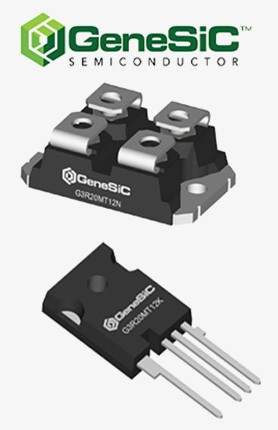


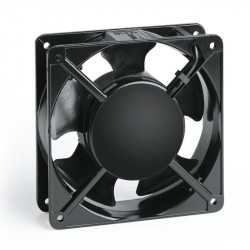

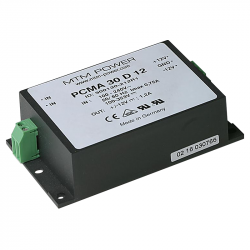
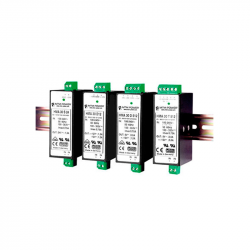
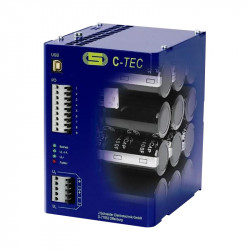
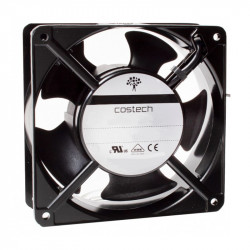

Leave a comment